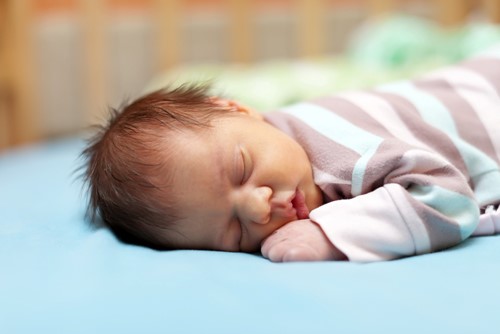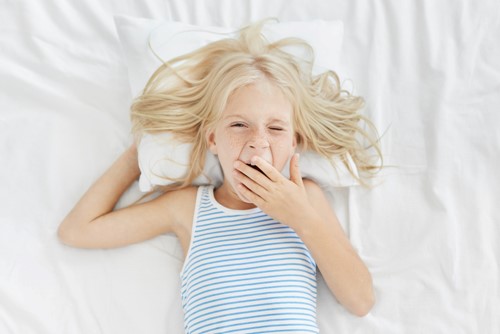CPAP and Kids: Managing Sleep Apnea as a Parent
Every parent has one top most priority: the well-being of their children. Unfortunately, sleep apnea is a distressing condition where a child’s breathing stops in the middle of the night.

At least 2 to 3% of children suffer from the illness, and it impacts their physical, cognitive, and mental health.
However, there are multiple ways to properly manage a child with sleep apnea. Here’s everything you need to know about the condition as a parent.
Signs To Look Out For
Proper diagnosis is the first step to help a child with sleep apnea. Here are some symptoms that should be a matter of concern:
- Excessive snoring
- Bedwetting
- Coughing and choking
- Sleeping in unusual positions
- Restless sleep
While these are symptoms that you can observe in your child’s sleeping habits, there are also some signs to look out for in their daytime behaviour, including:
- Hyperactive tendencies
- Poor performance in school
- Disproportionate weight gain
- Trouble maintaining concentration
- Daytime sleepiness despite being apparently well-rested
If the aforementioned symptoms persist and impact the everyday routine of your child, you should consult a doctor for a formal diagnosis. This will help you manage the illness with proper guidance and clarity.
Long-Term Consequences Of Undiagnosed Sleep Apnea
In case you’re wondering just how important it is to pick up the signs of sleep apnea in your child, here are the long-term consequences it can bring about if left untreated:
1. Attention Deficit Hyperactivity Disorder (ADHD)
ADHD is a common long-term consequence of undiagnosed sleep apnea. In fact, up to 95% of obstructive sleep apnea patients have some level of attentional problems. This happens because a sleep deprived child is likely to be moody and rebellious. They may also have trouble maintaining attention in certain situations. Here are five tips to help you manage ADHD in children.
2. Mouth Breathing
Children with sleep apnea tend to indulge in heavy mouth breathing. In the longer run, this can cause damage to the facial structure. Mouth breathing often causes children to have an elongated facial structure and may lead to retrognathia in extreme conditions.
3. Diabetes
Multiple scientific studies have found an association between sleep apnea and diabetes. Since sleep apnea causes disruption during sleep, it alters glucose metabolism, leading to the development of type 2 diabetes.
While not all sleep apnea patients develop diabetes, the strong correlation increases the chances.
So, sleep apnea, if not treated timely, can become the root cause of multiple serious health issues. Therefore, it is not something to be taken casually.

Treatment Options
Now that we have discussed the symptoms and consequences of sleep apnea, it is important to know how you can help your child with timely treatment. In this regard, there are multiple options you can explore:
Lifestyle Modification
This is an important aspect of treatment that many people neglect. But this is where you as a parent can play an important role. Lifestyle modification for sleep apnea involves losing weight (if your child is obese) and practising good sleep hygiene. There are plenty of resources on the internet on how you can help your child lose weight, and your child’s healthcare provider may also be helpful in this regard.
About sleep hygiene, here are some practices to consider:
- Discourage your child from taking naps during the day so they can fall asleep easily at night
- Avoid giving your child stimulants — such as coffee — close to bedtime
- Avoid placing bright lights where your child sleeps
- Establish a bedtime routine
- Discourage the use of screens — such as mobile phones and tablets — before bedtime
CPAP Therapy
This is the first-line medical therapy for sleep apnea. Continuous positive airway pressure, or CPAP, is a form of therapy intended to keep your child’s airways open while they sleep.
The components of a CPAP therapy system include an air-generating machine, a tube that carries the air to a mask, and the mask itself, which is worn while the user sleeps.
Getting your child used to wearing the mask every night might be a difficult task, but the treatment is highly effective and recommended.
In terms of costs, full-face CPAP masks typically cost between $75 and $200, varying in price depending on their manufacturer, features, and complexity. If you want to try it out before investing in one, you can hire a CPAP machine here.
Removal Of Tonsils
This remains the most popular form of treatment for moderate cases that don’t respond to CPAP. Sleep apnea is often caused by inflamed and swollen tonsils. In this case, surgery to remove tonsils can help open up blocked breathing airways.
Every year, more than 500,000 children undergo adenotonsillectomy, most of which are done to treat sleep apnea. It is an effective treatment option with an 80% success rate. After the procedure, recovery can take up to two weeks.
Surgical Intervention
For severe cases, some parents opt for a surgical procedure known as tracheostomy. It opens up the trachea to enable a stable oxygen flow, thus preventing breathing issues that are linked to sleep apnea.
Children who undergo the procedure need to stay in the hospital for at least three to five days to ensure proper post-surgery care. Moreover, some children may have trouble ingesting food afterwards, for which, a feeding tube may need to be inserted via the mouth or nose.
Tracheostomy is considered to be a final resort as the procedure is a little more invasive than alternative treatment options.
Final Thoughts
Seeing your child suffer due to sleep apnea is distressing. However, with proper information and timely treatment, it is treatable. Just make sure to work closely with an experienced healthcare provider to help your child through this.
Lastly, being a parent in these uncertain times is a tough job. Read how mothers are adapting to the new normal to help you with your parenthood journey.